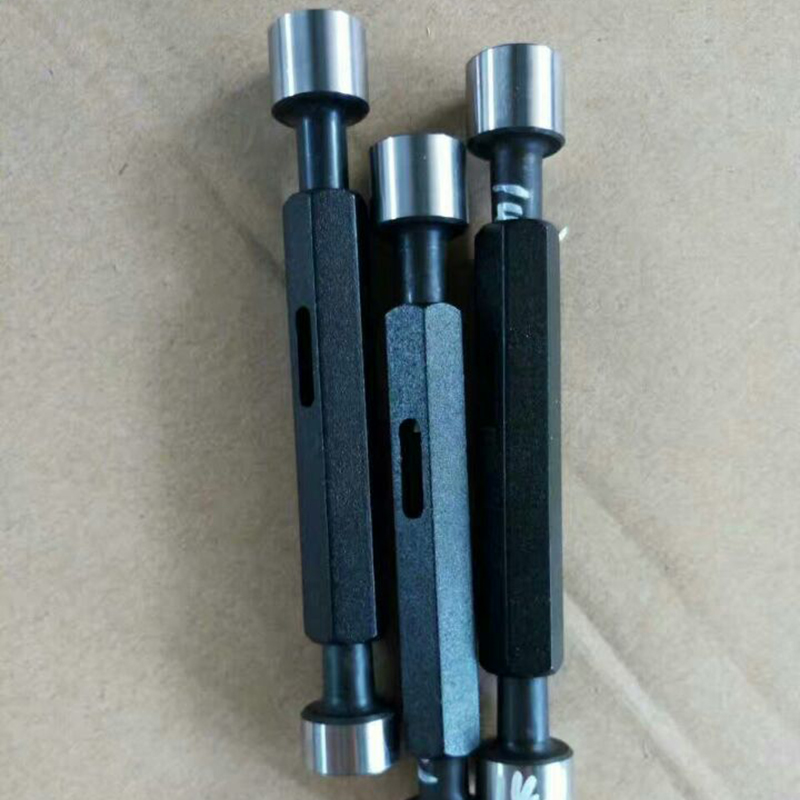Nov . 10, 2024 09:17 Back to list
40 mm Gate Valve Specification and Applications in Industrial Settings
Understanding the 40 mm Gate Valve A Comprehensive Overview
Gate valves have long been a staple in various industrial and residential applications, primarily used for on/off control of fluid flow. Among the various sizes available, the 40 mm gate valve stands out for its compact design and efficiency. In this article, we will delve into the features, applications, advantages, and maintenance of the 40 mm gate valve.
What is a Gate Valve?
A gate valve is a linear motion valve that opens or closes by raising or lowering a gate within the valve body. Unlike globe valves, which are often used for throttling, gate valves are primarily designed for allowing or stopping the flow of fluids. Their design minimizes pressure loss and provides a straight-through flow path, making them ideal for applications requiring full flow.
Key Features of the 40 mm Gate Valve
1. Size and Dimensions The 40 mm measurement refers to the nominal diameter of the valve. This size is often used in residential plumbing, irrigation systems, and light industrial applications where fair flow rates are required without occupying too much space.
2. Material Construction Gate valves are commonly made from various materials including brass, stainless steel, and cast iron. The choice of material depends on the specific application requirements such as temperature, pressure, and fluid characteristics.
3. Design Variants The 40 mm gate valve can come in several design variants, including rising and non-rising stem options. Rising stem valves have the stem visible during operation, providing a clear indication of whether the valve is open or closed. Non-rising stem valves, on the other hand, are suitable for installations with limited vertical space.
Applications of the 40 mm Gate Valve
The 40 mm gate valve is typically used in a wide range of applications, including
- Water Supply Systems Ensuring controlled distribution of water in municipal systems. - Irrigation Allowing farmers to control water flow in agricultural fields efficiently. - Fire Protection Systems Used in fire hydrants and water supply lines to provide an emergency source of water. - Oil and Gas Industry Manages the flow of oil and gases in pipeline systems. - HVAC Systems Controls the flow within heating and cooling systems.
gate valve 40 mm

Advantages of the 40 mm Gate Valve
1. Minimal Flow Resistance Gate valves provide a straight path for fluid, resulting in minimal resistance and pressure loss, particularly advantageous in long pipe runs.
2. Durability Made from robust materials, a well-maintained gate valve can last for many years, especially in non-corrosive environments.
3. Versatile Suitable for various applications, a 40 mm gate valve can be used in simple household systems or complex industrial processes.
4. Cost-Effective Compared to other valve types, gate valves generally offer a cost-effective solution for flow control.
Maintenance of 40 mm Gate Valves
To ensure the longevity and efficient operation of 40 mm gate valves, regular maintenance is crucial. Here are some tips
- Routine Inspection Check for leaks, rust, or corrosion regularly. Ensure that the valve opens and closes smoothly without excessive force. - Clean and Lubricate Regularly clean the valve exterior, and lubricate the stem threads to prevent seizing. - Test Operational Performance Periodically operate the valve to ensure it maintains proper sealing capabilities, especially after long periods of inactivity.
Conclusion
The 40 mm gate valve is a vital component in numerous systems, known for its reliable operation and efficiency in controlling fluid flow. With its wide range of applications, durable construction, and straightforward maintenance requirements, it is an excellent choice for both residential and industrial uses. Understanding its features and proper maintenance can help users leverage the full potential of this essential valve type, ensuring optimal performance for years to come.
-
Retrofitting Old Systems with Y Type Strainer ValvesNewsJun.20,2025
-
Predictive Maintenance Strategies for Industrial Butterfly ValvesNewsJun.20,2025
-
Optimizing Check Valve Types Performance in Harsh EnvironmentsNewsJun.20,2025
-
Material Selection for Ball Check ValvesNewsJun.20,2025
-
Cost-Effective Selection Criteria for Globe Gate Valve SizingNewsJun.20,2025
-
Control Valve Selection Criteria for Water Treatment PlantsNewsJun.20,2025
Related PRODUCTS









